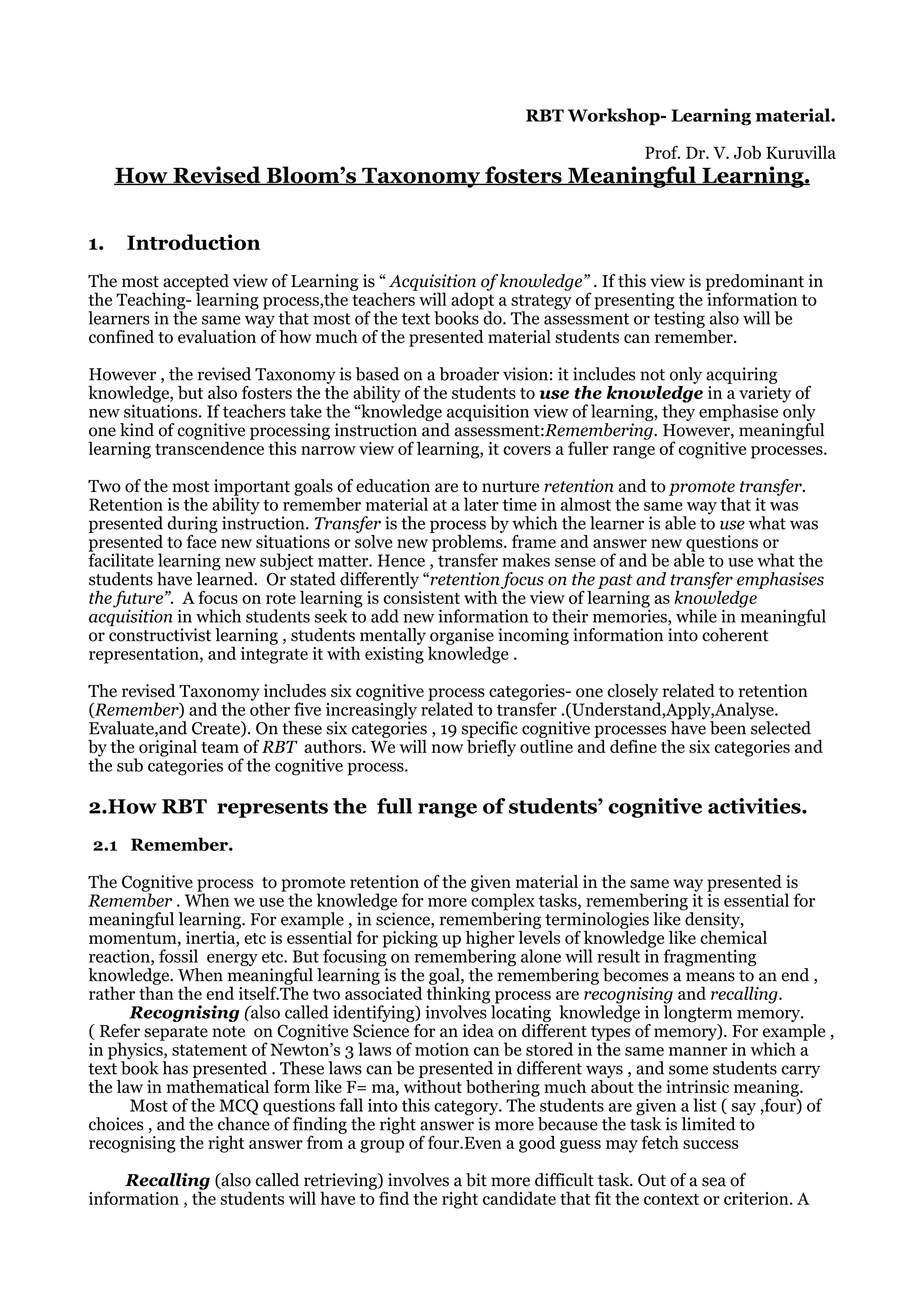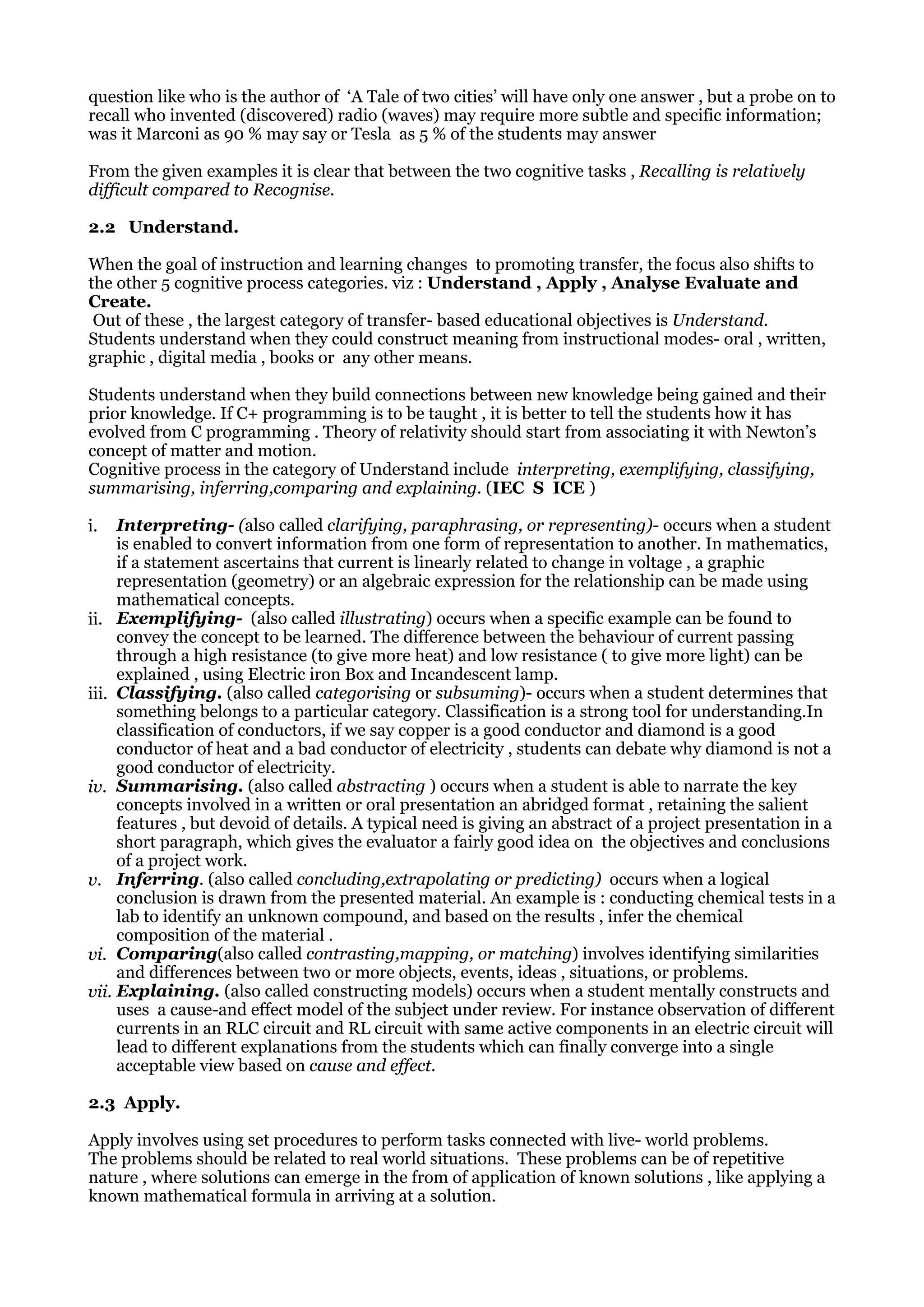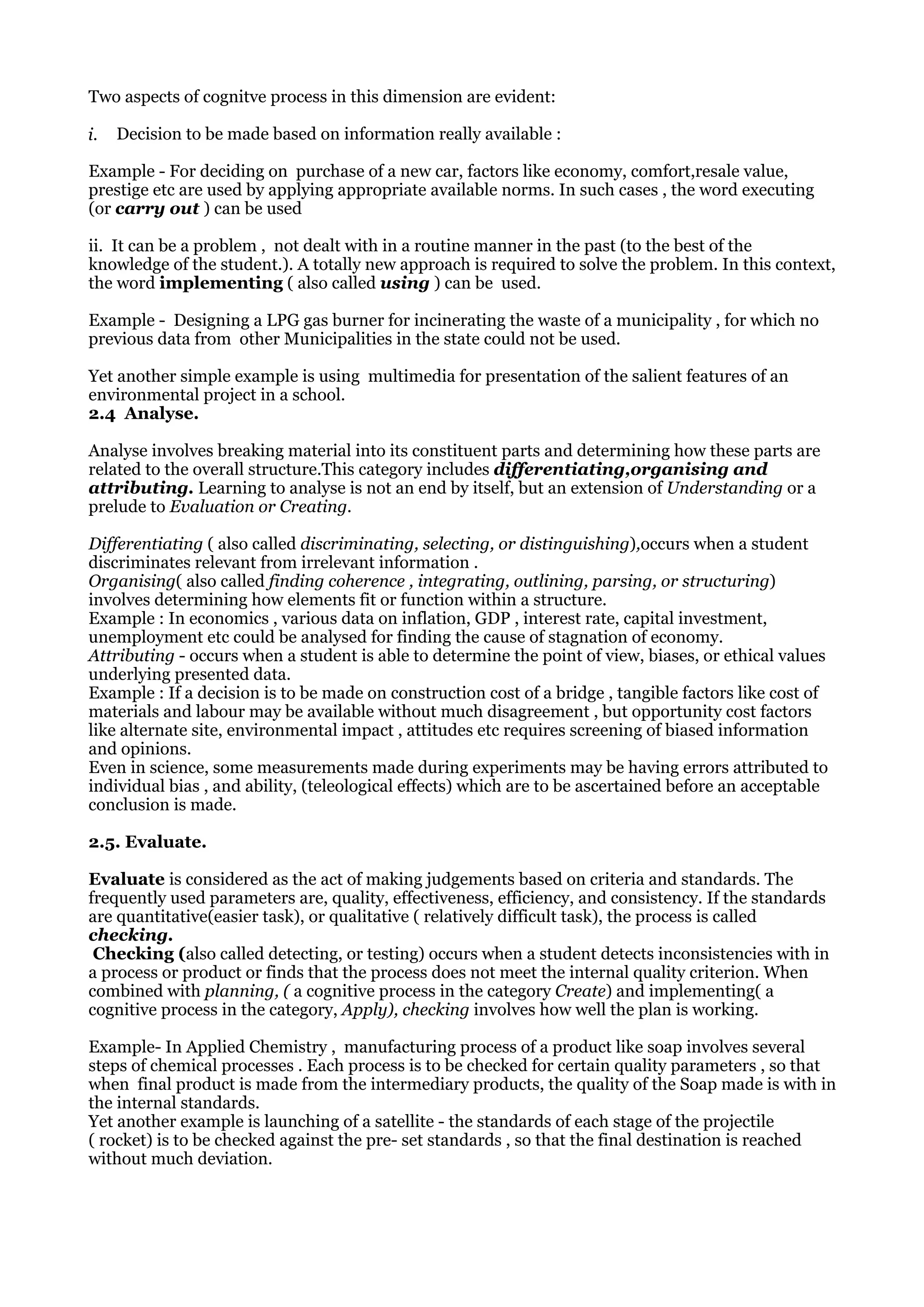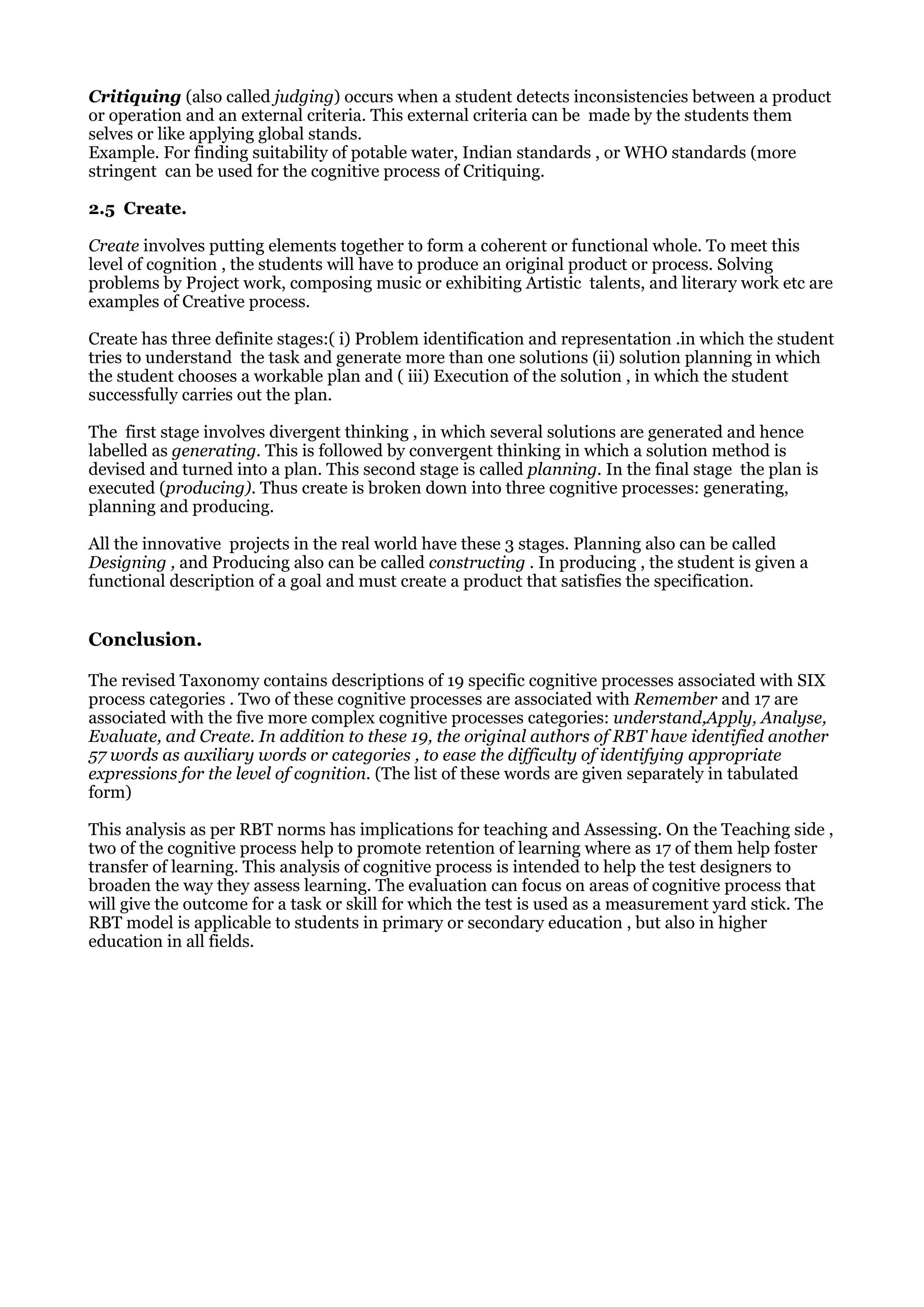The document discusses how the revised Bloom's Taxonomy (RBT) promotes meaningful learning beyond just knowledge acquisition. RBT includes six cognitive process categories that move from retention to transfer of knowledge: Remember, Understand, Apply, Analyze, Evaluate, and Create. These categories represent a fuller range of cognitive processes compared to just focusing on memorization. The goal of education should be both retention of material as well as transfer of knowledge to new situations. RBT helps teachers foster learning objectives and assessments that promote both retention and transfer.



